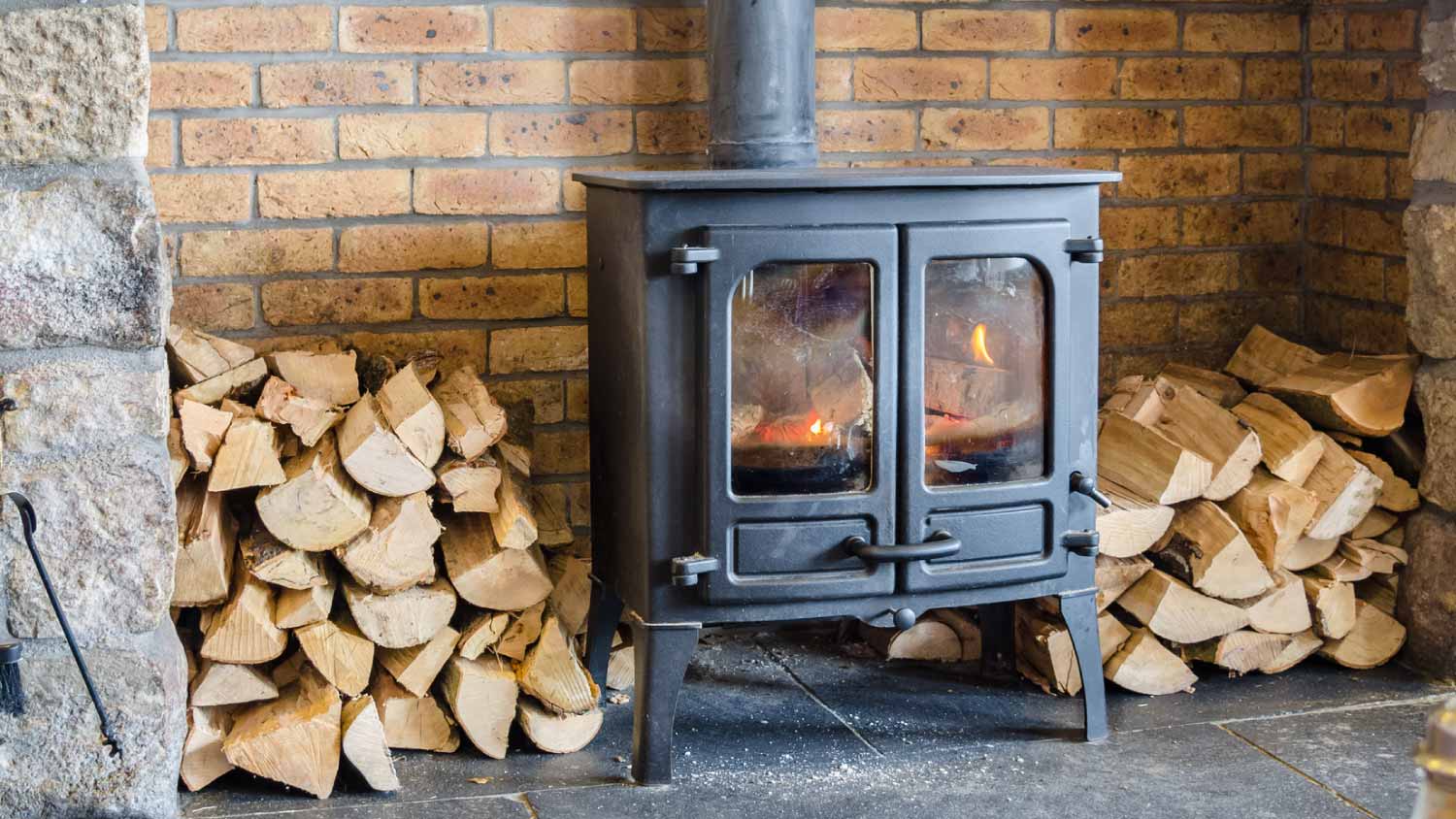How a Clothes Dryer Works: From Heat to Tumble
This is one cut-and-dry appliance


Heat, motion, and airflow are essential for a dryer to function.
A blower fan circulates hot air to remove moisture in your laundry.
A simple pulley wheel and belt system rotates the drum.
Sensors, thermostats, and timers manage drying cycles.
Clean the lint filter and vents regularly to prevent airflow blockages.
A clothes dryer ensures your clothes, bedsheets, and towels are fluffy, dry, and smelling great. A clothes dryer uses heat, motion, and airflow to remove moisture from wet laundry. It’s not everyone’s favorite chore, but learning about how a clothes dryer works can help you stop dryer problems in their tracks and avoid a damp disaster.
How Does a Clothes Dryer Work?
A clothes dryer uses an electric motor to rotate the drum of wet clothes while a blower circulates hot air through the chamber. The circulating hot air causes the moisture in the laundry to evaporate, and the steam leaves the dryer through a vent or drainpipe.
Your dryer will stay at a temperature between 120 degrees and 160 degrees Fahrenheit, depending on the type of laundry and cycle setting, thanks to the internal thermostat. Sensors in the dryer monitor the moisture level to ensure the clothes are dry and signal the dryer to turn off at the end of the cycle (cue the jammin’ dryer song).
Main Dryer Functions and Features
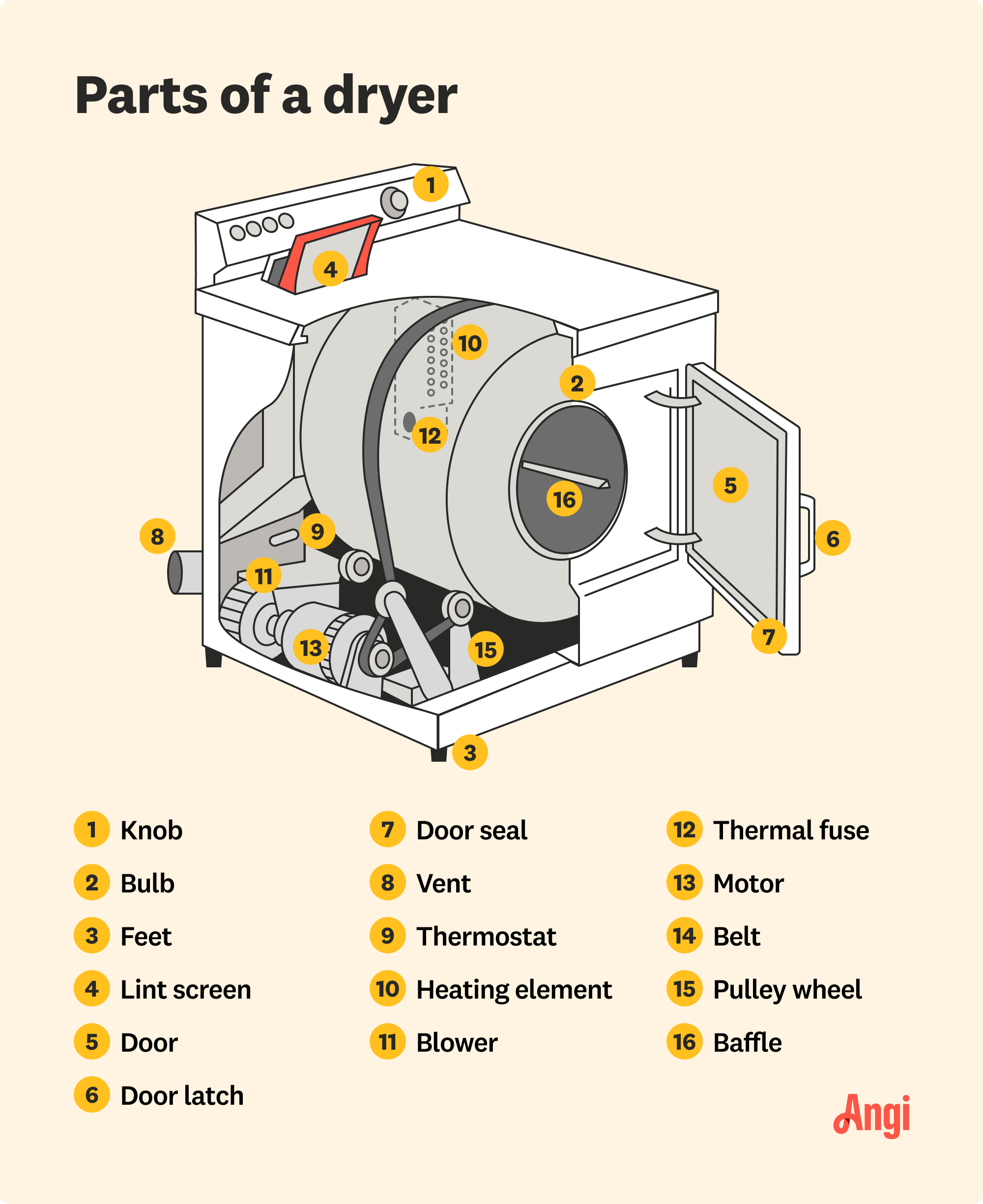
A clothes dryer works through three main components: heat, airflow, and motion. If any one function doesn’t work, the clothes won’t dry. Sometimes, you can successfully troubleshoot different dryer parts on your own. However, it’s always safest to contact a local dryer repair pro to help, especially if you have a gas dryer that’s giving you problems.
Heat
The dryer heats the air with a heating element that runs on electricity, propane, or natural gas. The thermostat, sensors, and thermal fuses regulate the temperature, which stays between 120 and 160 degrees Fahrenheit.
In electric dryers, an electric current runs through metal coils to create resistance and a buildup of electrons. The buildup and resistance generate heat. A blower fan circulates the hot air through the drum to remove moisture from the wet laundry.
In gas dryers, the pilot light ignites the gas to create heat. Metal plates then transfer the heat into the drum of the dryer, and the blower circulates the heated air through the drum. Electricity powers the other components, such as the control panel and light inside the dryer. You’ll need a gas hookup in your laundry room for a gas dryer.
Airflow
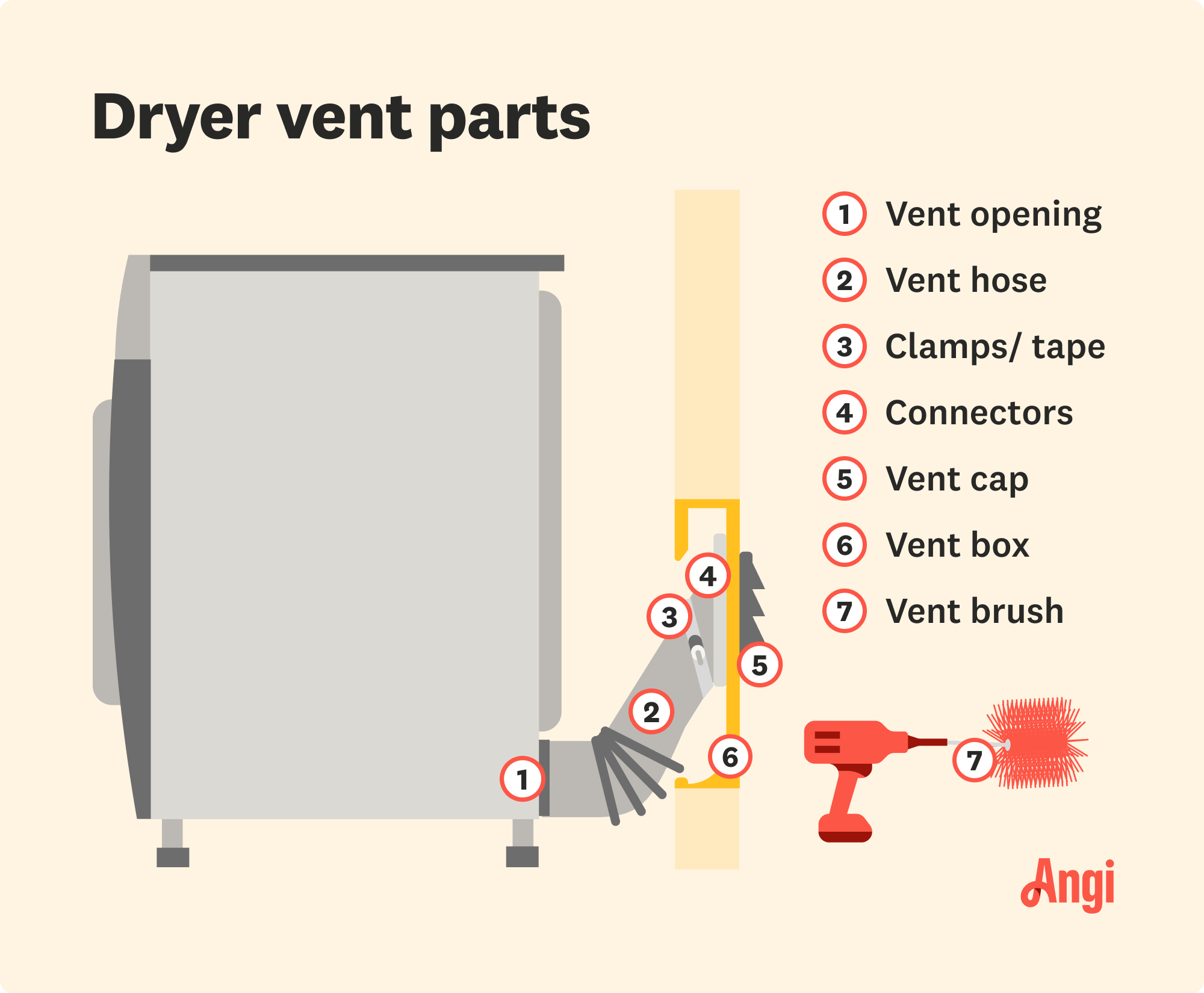
Air circulation and ventilation ensure that the hot air reaches your clothing and then exits the dryer. A dryer pulls in air through a circular opening in the back, the heating element warms the air, and the blower distributes it. The moisture from the laundry then travels out of the dryer to the outdoors through the exhaust duct and outdoor vent.
If you have a ventless dryer, the moisture-filled air travels through a heat exchanger that cools and condenses the steam. The water flows into a drainpipe or a containment chamber. The dryer reheats and sends the hot air through the drum, and the process repeats until your clothes are dry.
Motion
A drum rotates your clothes to allow for air circulation and even distribution of the hot air in the chamber. The tumbling motion also fluffs the laundry and reduces wrinkling. A pulley system with a belt and wheel turns the drum on a roller system that’s powered by a motor.
Extra Features
Beyond a dryer’s basic parts, some clothes dryers offer special features and systems. Newer luxury models often have computer electronics.
A clothes dryer may have these extra features:
Different cycle options, including automatic moisture sensing and timed cycles
A steam-dry option to reduce wrinkles or remove odors
Wi-Fi connectivity with remote control via a smartphone or smart home system
A sanitize cycle that uses high temperatures
Advanced moisture sensing to prevent overdrying and extended use
Special cycles for delicates, towels, and bulky items
Key Parts of a Dryer
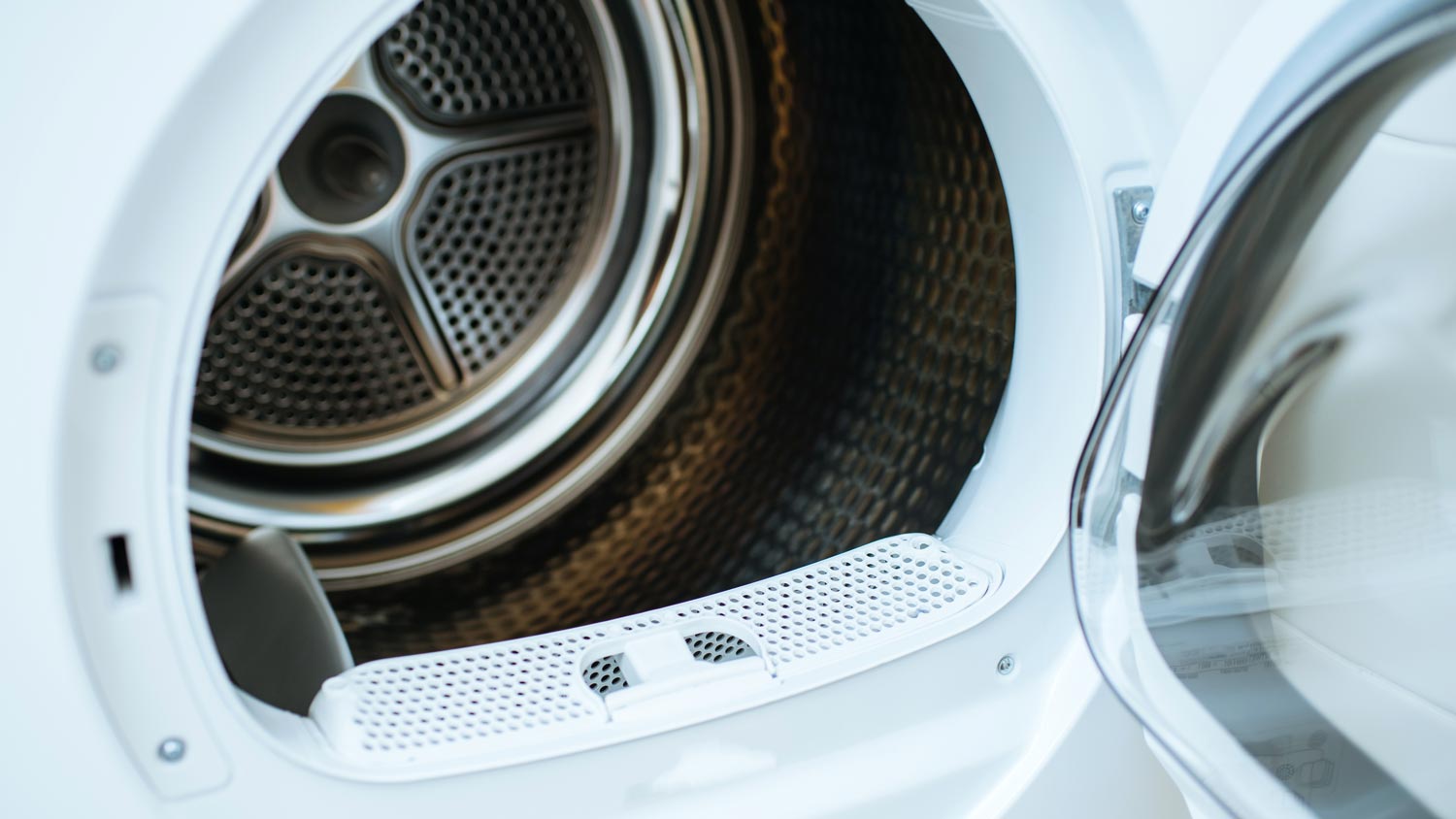
If your clothes dryer isn’t drying, won’t turn on, or you hear squeaking noises from your dryer, sometimes the fix is easy. Other times, you’ll need a pro to diagnose and fix the issue. Learn the key parts of a dryer to troubleshoot common clothes dryer problems.
Heating element: A coil or wire that heats the air
Blower: A fan that circulates hot air through the drum
Drum, pulley system, and motor: Rotates the clothes during the cycle
Sensors: Detect moisture levels to indicate when a cycle is complete
Lint filter: Collects debris and lint to prevent clogged ducts and vents
Frequently Asked Questions
A dryer knows when clothes are dry when sensors inside the appliance detect that the air inside the drum is void of moisture and is the proper temperature. At that point, the cycle stops, and the dryer alerts you that the clothes are dry. Different settings allow you to change the dryness of the cycle and the amount of time the dryer runs.
Dryers pull in air from a circular opening in the back of the dryer. The dryer's heating element heats the air, and a blower fan circulates the hot air through the drum. The hot air travels outside the dryer through a vent or is cooled by a heat exchanger that condenses the steam into water and sends it down a drainpipe or to a containment compartment.
Wet or soaking clothes won’t dry in the dryer because of the elevated moisture levels. The heaviness of the soaking wet clothes could damage the dryer because it puts too much strain on the drum and the mechanisms that spin it, kind of like when the drum is too full and the dryer won’t start. Put soaking clothes in the washing machine and use a spin cycle to remove excess moisture (you don’t have to do a whole cleaning cycle) before putting the items in the dryer.


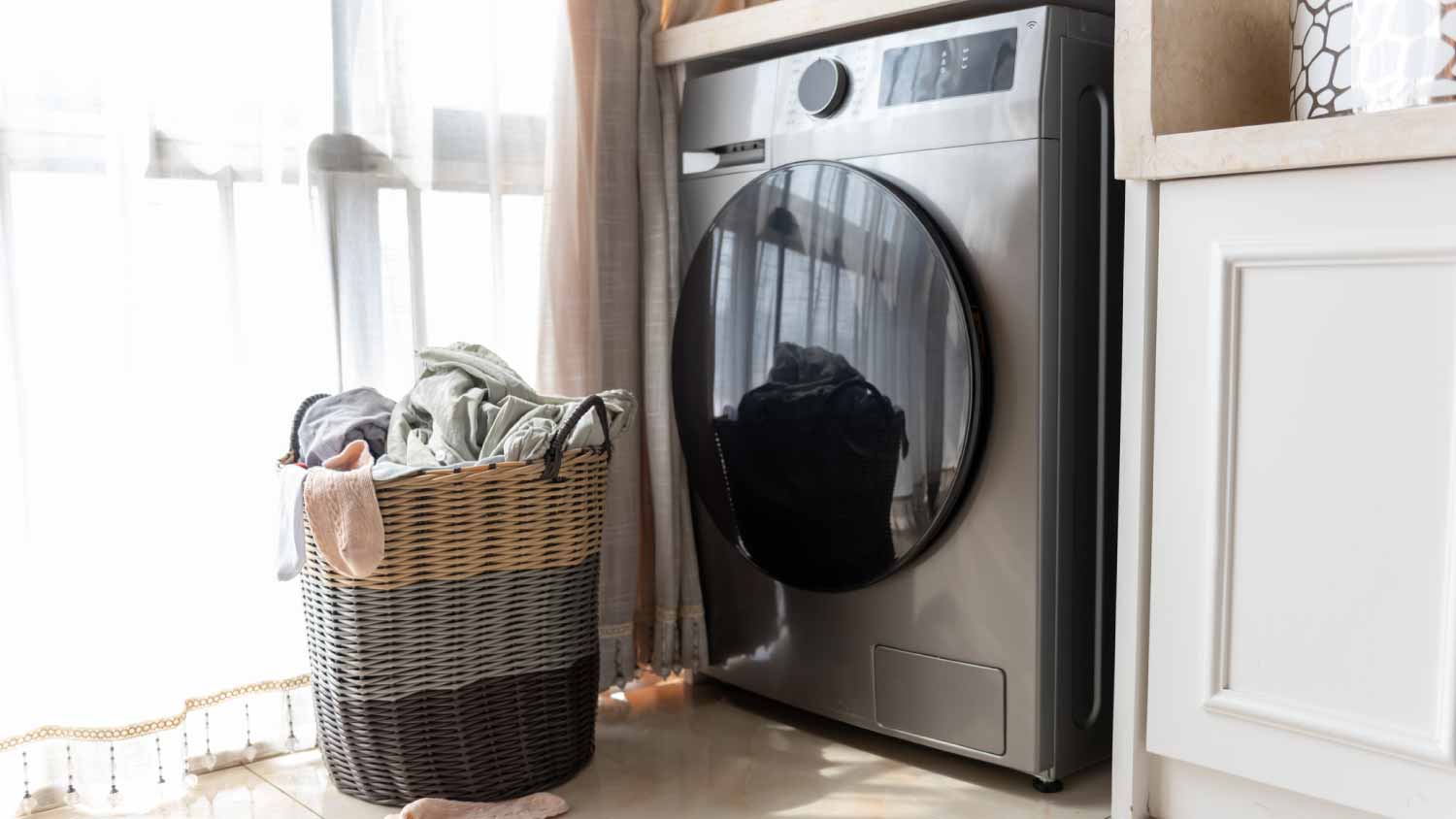
.jpg?impolicy=leadImage)

- Appliance Repair Companies
- Washing Machine Repair
- Dryer Repair
- Refrigerator Repair
- Dishwasher Repair
- Oven Repair
- Wood & Pellet Stove Repair
- Freezer Repair Services
- Wood Stove Services
- Gas Stove Repair
- Emergency Appliance Repair Companies
- Ice Maker Repair
- Gas Appliance Repair
- GE Appliance Repair
- GE Refrigerator Repair
- GE Dryer Repair
- GE Dishwasher Repair
- GE Washing Machine Repair
- Samsung Appliance Repair
- Samsung Refrigerator Repair
- Samsung Dryer Repair
- Samsung Washer Repair
- Samsung Dishwasher Repair
- Samsung Oven Repair
- Whirlpool Repair
- Whirlpool Refrigerator Repair
- Whirlpool Washer Repair
- Whirlpool Dryer Repair
- Whirlpool Oven Repair
- Maytag Appliance Repair
- Maytag Refrigerator Repair
- Maytag Washer Repair
- Maytag Dryer Repair
- Maytag Dishwasher Repair
- Kitchenaid Appliance Repair
- Kitchenaid Oven Repair
- Kitchenaid Refrigerator Repair
- Kenmore Appliance Repair
- Kenmore Dishwasher Repair
- Kenmore Washer Repair
- Kenmore Dryer Repair
- LG Refrigerator Repair
- Bosch Appliance Repair
- Kenmore Refrigerator Repair
- LG Appliance Repair Services
- GE Microwave Repair
- Electrolux Appliance Repair
- Electrolux Washer Repair
- Kitchenaid Dishwasher Repair Services
- Wood Stove Inspection
- Dishwasher Installation
- Trash Compactor Repair
- Parts of a Dryer: What They Are and How They Work
- Why Your Dryer Won't Start and How to Fix It
- 7 Types of Dryers and How to Choose One
- How Long Do Dryers Last? Get the Most Out of Yours and Know When to Replace It
- Who Fixes Dryers? Here’s Who to Call
- 9 Helpful Tips to Prevent Dryer Fires
- Why Your Dryer Is Not Drying Properly: A Troubleshooting Guide
- Who Cleans Dryer Vents? Here’s Who to Call
- Why Is My Dryer Squeaking? Troubleshooting and Solutions
- Who Should You Call to Repair a Dryer Vent?



